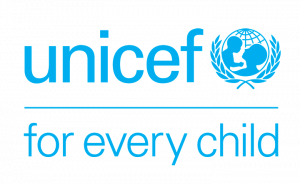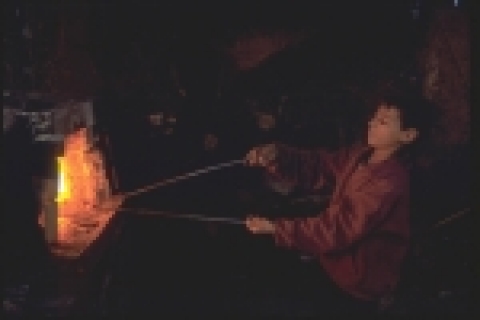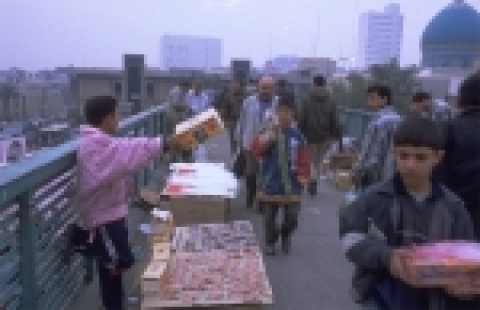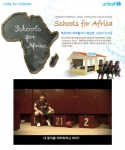Child Labour Robs Children of Childhood, Impedes Development
Hundreds of millions of children are forced to work when they should be learning and playing, which deprives them, their families and nations the opportunity to develop and thrive, UNICEF said today.
“Children who are compelled to work are robbed of childhood itself,” UNICEF Executive Director Ann M. Veneman said today on the International Day Against Child Labour. “The majority of child labourers are hidden from view and beyond the reach of the law. Many of them are denied basic health care, education, adequate nutrition, and the protection and security of their communities and families.
Worldwide, there are an estimated 246 million children engaged in child labour. Some 180 million children aged 5~17 (or 73 per cent of all child labourers) are believed to be engaged in the worst forms of child labour, including working in hazardous conditions such as in mines and with dangerous machinery. Of these children, 5.7 million are forced into debt bondage or other forms of slavery, 1.8 million are forced into prostitution or pornography and 600,000 are engaged in other illicit activities.
Veneman said that education, which is a critical component of the protective environment that is needed to shield children from exploitation, is a powerful means of preventing child labour.
Removing barriers to school enrollment is the focus of the School Fee Abolition Initiative launched in 2005 by UNICEF and the World Bank. UNICEF also works with the International Labor Organization and other partners to promote policies, raise resources and put in place practical measures to combat child labour.
One such programme is the UNICEF-supported Basic Education for Hard to Reach Urban Children (BEHTRUC) project in Bangladesh, which has provided non-formal education to 346,500 working children, half of whom are girls, since 1997. The children, as young as eight and as old as 14, were primarily doing domestic work or toiling in factories. The government supports the programme with a network of 151 non-governmental organizations and provides stipends to the children’s families to compensate them for the lost income.
In addition to being denied education, children who work are frequent victims of maltreatment, physical and psychological violence or abuse by supervisors, co-workers and outsiders. Violence against children in the workplace is one of five key areas to be addressed in UN Secretary General’s Study on Violence Against Children, a global report to be issued in October.
UNICEF’s efforts to protect children from child labour and other forms of exploitation focus on creating a protective environment for children. In a protective environment, people at all levels of society work individually and together to enforce protective laws, develop the necessary services, equip children and those who work with children with the information and skills they need to prevent and respond to abuse, and challenge all forms of discrimination.
“Combating child labour requires political leadership and broad-based partnerships,” Veneman said. “It is everyone’s responsibility. Parents, community leaders, the private sector and governments - must all take responsibility to ensure that children are not exploited in the workplace.”
유니세프한국위원회 개요
유니세프한국위원회는 한국에서 유니세프를 대표하는 기관(비영리법인)으로서 한국위원회의 주된 임무는 세계 어린이를 위해 국내에서 세계 어린이 현황과 유니세프 활동을 널리 알려 어린이돕기 기금을 조성하는 것입니다. 또한, 아동의 권리 홍보 및 모유수유 권장, 세계교육 등의 사업을 통해 어린이 권리를 신장하는 활동도 함께 펼쳐 나갑니다. 유니세프한국위원회가 국내에서 펼치는 모든 활동은 유니세프가 전세계적으로 펼치고 있는 어린이 구호활동을 지지하기 위한 것입니다.
웹사이트: http://www.unicef.or.kr
연락처
유니세프한국위원회 홍보부 김재명 대리, 02-735-2315, 이메일 보내기





![방탄소년단의 글로벌 팬미팅 BTS 5TH MUSTER [MAGIC SHOP]에서 진행된 유니세프 부스 방탄소년단의 글로벌 팬미팅 BTS 5TH MUSTER [MAGIC SHOP]에서 진행된 유니세프 부스](https://file.newswire.co.kr/data/datafile2/thumb/2019/10/3554238800_20191024170202_4476783960.jpg)
